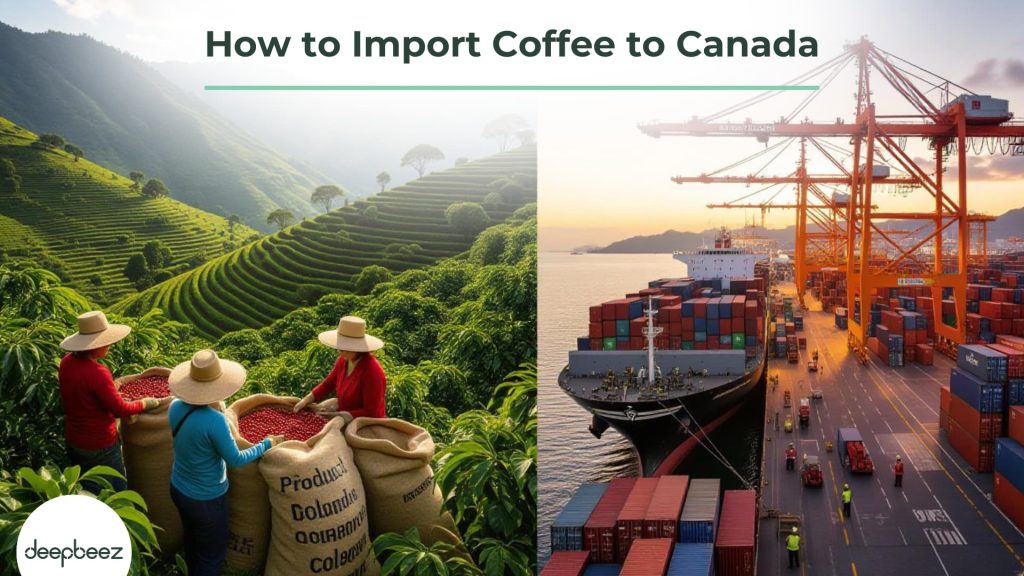Coffee is one of the most popular beverages in Canada, and the country is a significant importer of coffee beans. As a result, there is a significant opportunity for businesses looking to import coffee to Canada. However, navigating the complexities of importing coffee can be challenging, especially for those who are new to the process. Calculating all those customs taxes and duties is a daunting task. All successful businessmen use Deepbeez Customs Duty Calculator to get a real glimpse of their costs.
The Best Way to Import Coffee To Canada
The process has several steps, but if you find a good supplier who knows the Canadian market, they can help you with most of the complicated parts. Remember to keep all your paperwork for 6 years – it’s the law! Want to import coffee to Canada? Here’s what you need to know.
| Step | What You Need to Do | Key Requirements |
| 1. Find Supplier | Choose a reliable coffee supplier | • Supplier must have export licenses • Look for direct trade suppliers who know Canadian market • They should handle shipping and customs |
| 2. Register Business | Get government permits to import | • Get Business Number (BN) from Canada Revenue Agency • Register with CARM system through CBSA • Assign a Business Account Manager |
| 3. Follow Rules | Make sure coffee meets Canadian standards | • Follow Canadian Food and Drug rules • May need CFIA inspection • Get SFCR license for large imports• Ensure fair labor practices |
| 4. Ship & Label | Arrange transport and proper labeling | • Let supplier handle shipping (recommended) • Labels must show country of origin • Use English and French on labels • Budget $2-4 USD per kg for shipping |
| 5. Clear Customs | Get coffee through Canadian border | • Fill out customs forms • Consider hiring a customs broker • May need financial security for fast clearance |
| 6. Pay Fees | Handle duties and taxes | • Most coffee enters duty-free • No GST on raw coffee imports • GST/HST applies when you sell in Canada |
